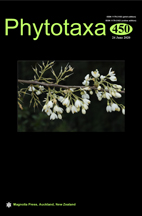Abstract
In this study we describe areas of endemism from Brazilian mountaintops associated with campo rupestre vegetation based on taxonomically verified records of Microlicieae (Melastomataceae). To test the relevance of taxonomically vetted data, we compared these areas with those recovered using records downloaded from the Global Biodiversity Information Facility (GBIF) website. A total of 12 areas of endemism are recognized and described, of which only eight (66%) were retrieved using GBIF data. With 1º and 0.5º cells, analyses of GBIF data didn’t detect both individual and consensus areas of endemism with Endemicity scores as high as analyses of taxonomically verified data. Records based on misidentified specimens and/or incorrect coordinates affected the detection of areas of endemism using GBIF data. Our results show that taxonomically verified data may improve the efficiency of areas of endemism identification. Besides, the results suggest that the recovery of stable and continuous areas of endemism may be improved by using larger cells and adopting the loose criterion rule to merge individual areas of endemism into consensus areas. Biogeographically, the results indicate that the evolutionary histories of Chapada Diamantina, Southern Espinhaço and Brazilian Central Plateau were related to the radiation of Microlicieae, especially the genera Lavoisiera, Microlicia, and Trembleya. The expansion of areas of endemism in the Cadeia do Espinhaço was probably accelerated by climatic instability and glaciation cycles from Pliocene to Pleistocene.

